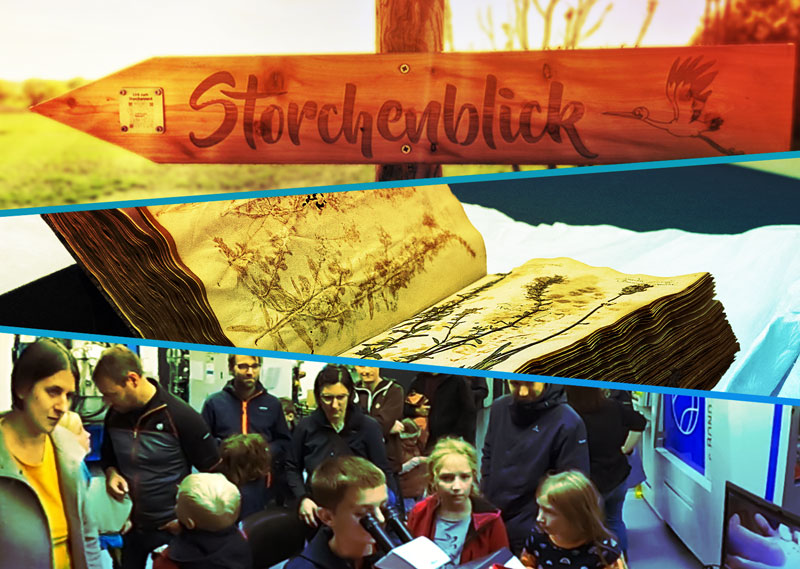High Tech everywhere

However, the work at ifw Jena is not limited to the development of high-tech processes for metals, glasses and ceramics. “Our research results are used everywhere,” says Dr.-Ing. Simon Jahn, Managing Director of the institute, “whether in companies that want to use high technology or in the everyday lives of all people.”
Laser beams are naturally used, for example, for complicated cutting geometries on sensitive glass or microscopic markings for automation processes. The institute is also developing suitable laser processes for sealing PET bottles, which are used millions of times a day.
But lasers can also be used to support breeding storks, such as the pair of storks currently rearing their young in Bubendorf, Saxony: Of course, the storks should not be disturbed by too many onlookers so that they can return to their old nest next year. In order to enable as many people as possible to observe the storks, metal plaques were laser-printed and QR codes created at ifw Jena and hung up in the region. The weatherproof badges enable interested parties to quickly find their way to the stork nest webcam. This means that anyone can watch the young grow up online without disturbing the storks.
The accredited materials testing laboratory at ifw Jena also examines more than just test specimens from current research projects. High-precision digital radiographic testing is mainly used here for the non-destructive testing of metallic samples. The tests are used to determine the quality of the samples and assess the effectiveness of newly developed production processes. “In addition to samples from our research, which are often only a few days old, we also X-ray samples that are over 300 years old,” reports Maik Anders, Head of the Materials Testing Laboratory. "The Thuringian State Museum Heidecksburg in Rudolstadt, for example, had a book in its archives whose colorful decorations were puzzling as to the origin of the binding. The binding could have simply been cut up and the color remnants made accessible. But then the book from the 17th century would have been destroyed." With the digital radiography equipment at ifw Jena, the binding could be X-rayed without having to destroy it. The X-ray images also provided information about the origin and production process of the book, which is now well preserved and back at Heidecksburg Castle.
Not only laser processes and methods of materials testing are made accessible at ifw Jena. It is important to the colleagues at the research institute that their research work finds as many fields of application as possible. "We don't just do research for the drawer, but always for specific needs. If there are as many fields of application as possible for our work, this is of course the ultimate confirmation of the relevance of industry-related research," says Simon Jahn, summarizing the mission of ifw Jena.
And so the work, facilities, laboratories and ideas at the institute are also regularly made accessible to the public - next time on the Doors Open Day of the show with the mouse on October 3, 2025, when children, young people and adults can try out laser welding, bonding technology, materials testing or 3D printing for themselves at ifw Jena.


